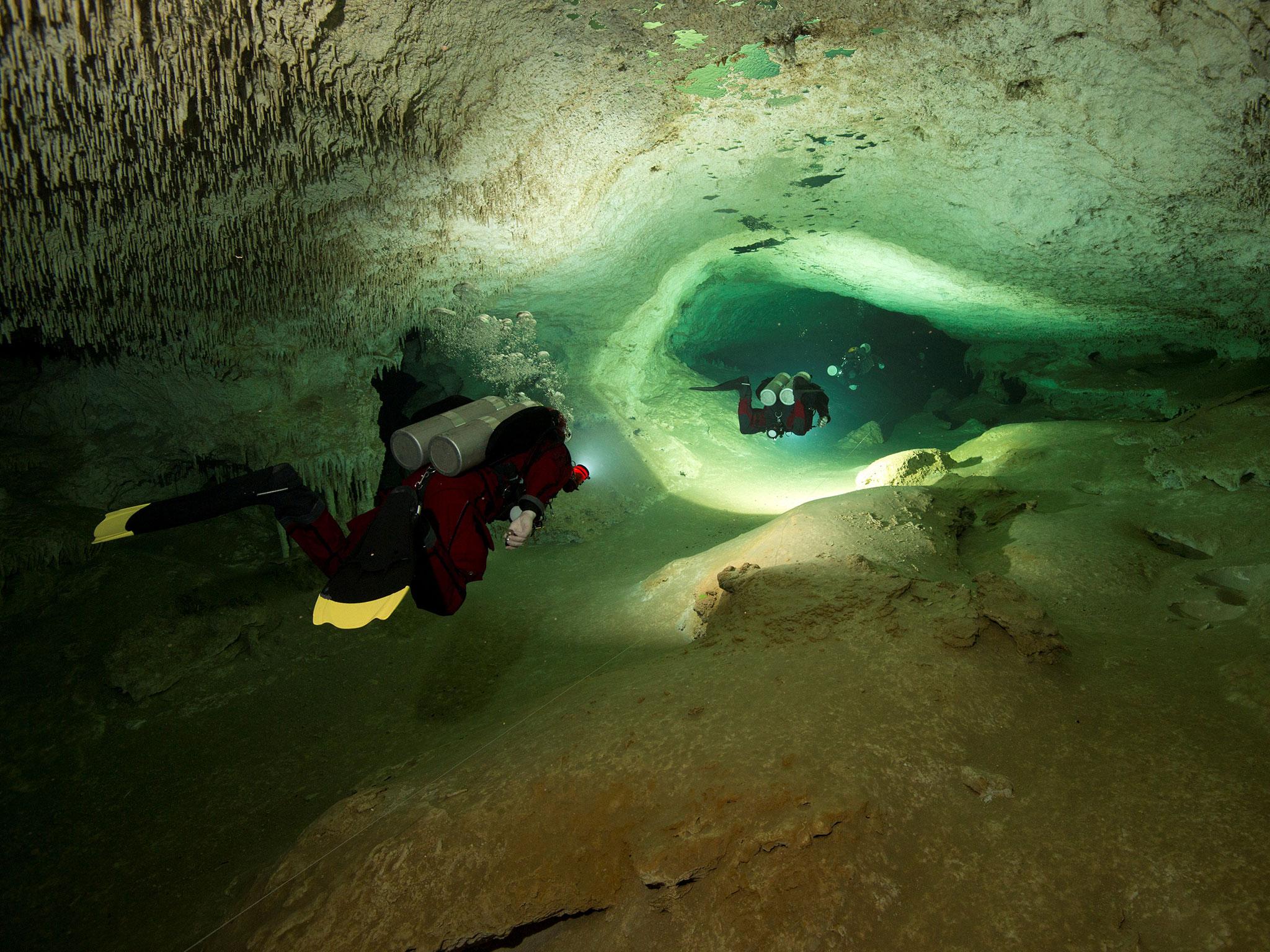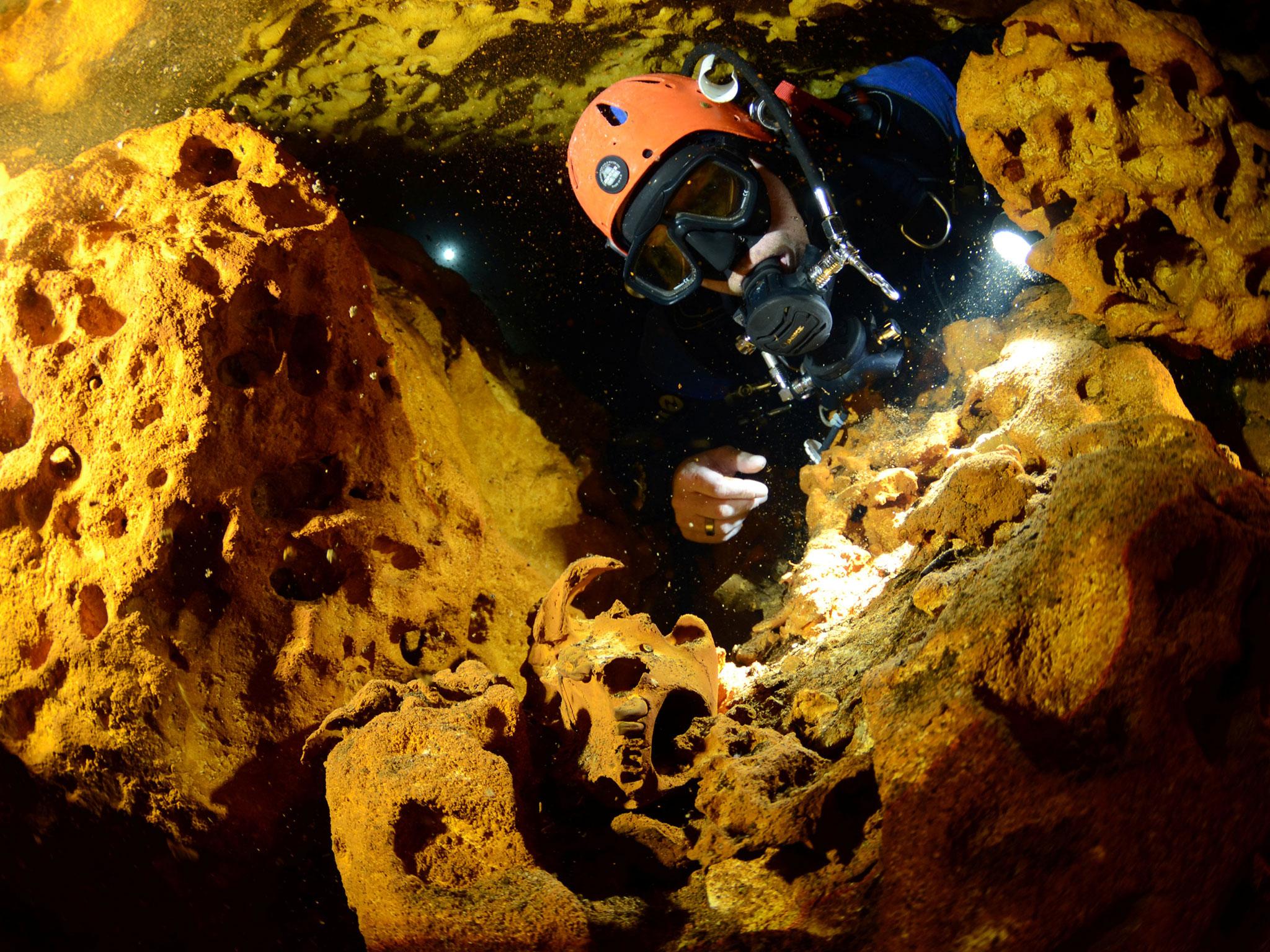Divers find 'amazing' underwater tunnel network that could unravel mysteries of Mayan civilisation
After months of exploring maze of underwater channels, project dedicated to study and preservation of subterranean waters makes discovery
Your support helps us to tell the story
From reproductive rights to climate change to Big Tech, The Independent is on the ground when the story is developing. Whether it's investigating the financials of Elon Musk's pro-Trump PAC or producing our latest documentary, 'The A Word', which shines a light on the American women fighting for reproductive rights, we know how important it is to parse out the facts from the messaging.
At such a critical moment in US history, we need reporters on the ground. Your donation allows us to keep sending journalists to speak to both sides of the story.
The Independent is trusted by Americans across the entire political spectrum. And unlike many other quality news outlets, we choose not to lock Americans out of our reporting and analysis with paywalls. We believe quality journalism should be available to everyone, paid for by those who can afford it.
Your support makes all the difference.A team of divers have discovered what is believed to be the biggest flooded cave on the planet in eastern Mexico.
By connecting two underwater caverns, the Gran Acuifero Maya (GAM) project identified the 216 mile (347km) cave after months of exploring a maze of underwater channels.
The project, which is dedicated to the study and preservation of the subterranean waters of the Yucatan peninsula, said the discovery could shine new light on the ancient Mayan civilisation.
Near the beach resort of Tulum, the group found that the cave system known as Sac Actun, once measured at 163 miles (263km), communicated with the 52 mile (83km) Dos Ojos system, the GAM said in a statement. Because of this, Sac Actun has now absorbed Dos Ojos.
Guillermo de Anda, the director of GAM and an underwater archaeologist, said the “amazing” find would help to understand the development of the rich culture of the region, which was dominated by the Mayan civilisation before the Spanish conquest.
“It allows us to appreciate much more clearly how the rituals, the pilgrimage sites and ultimately the great pre-Hispanic settlements that we know emerged,” he told Reuters.

Mr de Anda and his team previously discovered what they believed was a hidden passageway beneath a 1,000-year-old Mayan temple.
The experts thought the tunnel under the Kulkulcan pyramid, which is part of the Chichen Itza archaeological site in Yucatan, could lead to a natural sinkhole linked to subterranean waters, known as a cenote.
The Yucatan peninsula is studded with monumental relics of the Mayan people, whose cities drew upon an extensive network cenotes.

Some cenotes acquired particular religious significance to the Mayans, whose descendents continue to inhabit the region.
Several are thought to have been used by the ancient Mayans for human sacrifices and previous expeditions have found human bones in cenotes beneath Chichen Itza.

Join our commenting forum
Join thought-provoking conversations, follow other Independent readers and see their replies
Comments